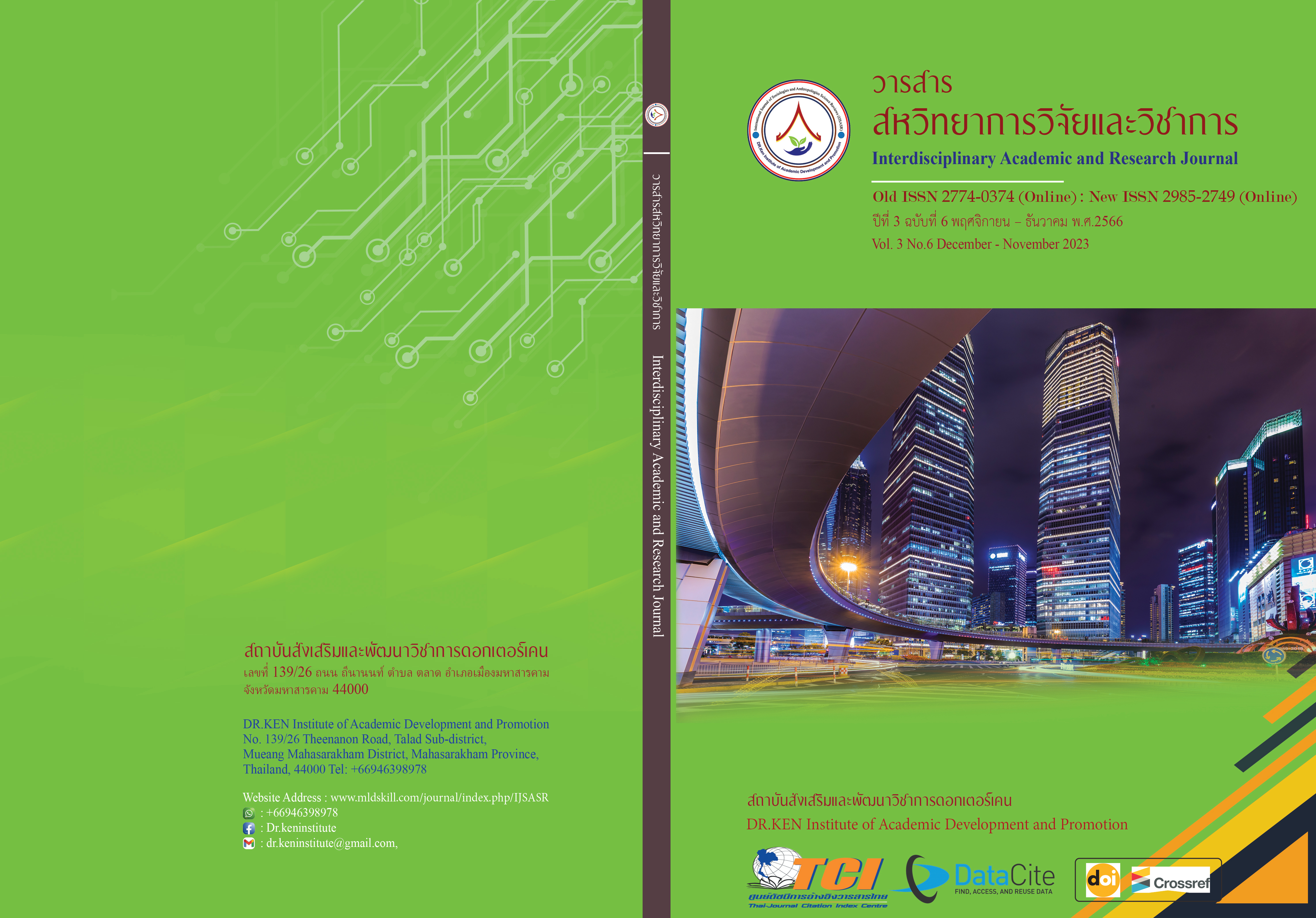Wellness Behavior of Chinese Students at Bangkokthonburi University
DOI:
https://doi.org/10.60027/iarj.2023.272228Keywords:
Wellness Behavior; , Chinese Students;, Bangkokthonburi UniversityAbstract
Background and Aims: Due to the outbreak situation of the Covid-19 virus in the past. Most people are becoming more interested and aware of their health care. Staying healthy helps build your immune system and protects you from viruses. People therefore change their lifestyle to the New Normal. Therefore, it is an interesting issue to study the health trends of many groups of people. Observing that Chinese students have different lifestyle habits from Thai students, but still care about their health. The researcher is therefore interested in studying the health behavior of Chinese students. To study the Wellness behavior of Chinese students at Bangkokthonburi University.
Methodology: The sample group used in this research consisted of Chinese students studying and living at Bangkok Thonburi University, a total of 232 people. The instrument used for data collection was a questionnaire on the Wellness behavior of Chinese students at Bangkokthonburi University created with a reliability of 0.71. The data were analyzed by frequency distribution, percentage, mean, and standard deviation.
Results: (1) general information of Chinese students at Bangkok Thonburi University can be summarized as a total of 232 people, divided into 158 males 68.10 %, and 74 females 31.90 %. (2) knowledge and understanding about health There are 3 levels of Chinese students. Out of the total scores in answering the health questionnaire, 1856 points, Chinese students answered "yes" questions, totaling 1564 points, 84.3 percent. From the analysis of this data, the respondents answered correctly. More than 75 percent were at the high level. And (3) Health care behavior of Chinese students at Bangkok Thonburi University was found to be at a good level.
Conclusion: There were 232 Chinese students at Bangkok Thonburi University, with 68.10% male and 31.90% female. Their understanding of health was high (84.3%) and their healthcare behavior was good according to the analysis of the data received.
References
เนตรนภา กิจรุ่งพิพัฒน์ และ อนุสรา พันธุ์นิธิทร์. (2555). พฤติกรรมการดูแลสุขภาพของนักศึกษามหาวิทยาลัยศิลปากร วิทยาเขตสารสนเทศเพชรบุรี. เพชรบุรี : คณะวิทยาการจัดการ มหาวิทยาลัยศิลปากร.
ไพศิษฐ์ ตระกูลก้องสมุท. (2563). จุดเปลี่ยนสุขภาพ New Normal หลังวิกฤติโควิด-19. บทความสุขภาพ โรงพยาบาลสมิติเวช. Retrieved on March 18, 2023 from: https://www.samitivejhospitals.com/th/article/detail/new-normal
กมลมาลย์ วิรัตน์เศรษฐสิน. (2560). เส้นทางสู่ธรรมชาติ สุขภาพส่วนบุคคล ภาวะที่ต้องทบทวน. กรุงเทพฯ: โรงพิมพ์พระพุทธศาสนาของธรรมสภา.
กรมสนับสนุนบริการสุขภาพ. (2561). แบบประเมินความรอบรู้ด้านสุขภาพและพฤติกรรมสุขภาพ ตาม 3 อ.2ส. ของประชาชนที่มีอายุ 15 ปีขึ้นไป ฉบับปรับปรุงพ.ศ. 2561. Retrieved on March 18, 2023 from: http://www.hed.go.th/news/3268.
สิทธิพงษ์ อินทร์น้อย (2565). อาจารย์ประจำผู้ดูแลนักศึกษาจีนสาขาวิทยาศาสตร์การกีฬา (อาจารย์ล่ามจีน). มหาวิทยาลัยกรุงเทพธนบุรี: สัมภาษณ์.
Andersen, R.M. (1995). Revisiting the Behavioral Model and Access to Medical Care: Does it Matter? Journal of Health and Social Behavior, 36(1), 1-10. doi:10.2307/2137284
Bandura, A. (2004). Health Promotion by Social Cognitive Means. Health Education & Behavior, 31(2), 143-164. doi:10.1177/1090198104263660
Emanuel, E. J., & Emanuel, L. L. (1992). Four Models of the Physician–Patient Relationship. JAMA, 267(16), 2221-2226. doi:10.1001/jama.1992.03480160079038
Glanz, K., Rimer, B. K., & Viswanath, K. (Eds.). (2015). Health Behavior: Theory, Research, and Practice. 5th ed. Jossey-Bass.
Qian, L., Yuen, L.W., Feng, Y., Newman, I.M., Shell, D.S., & Du, W. (2018). Effect of a Comprehensive Health Education Program to Increase Physical Activity among Primary School Students in China. Scientific Research Publishing. 8 (2), 193-204. https://doi.org/10.4236/ape.2018.82018
Wang, D., Ou, C-Q. Chen, M-Y., & Duan, N. (2009). Health-promoting lifestyles of university students in Mainland China. BMC Public Health. 9, 379, https://doi.org/10.1186/1471-2458-9-379.
Williams, D.R., & Collins, C. (2001). Racial Residential Segregation: A Fundamental Cause of Racial Disparities in Health. Public Health Reports, 116(5), 404-416. doi:10.1093/phr/116.5.404
Downloads
Published
How to Cite
Issue
Section
License
Copyright (c) 2023 Parnrada Pacharasitangoon, Rumpai Soonchan, Nannapat Pholtan, Piyawat Talubtong, Paitoon Zaechou

This work is licensed under a Creative Commons Attribution-NonCommercial-NoDerivatives 4.0 International License.
Copyright on any article in the Interdisciplinary Academic and Research Journal is retained by the author(s) under the under the Creative Commons Attribution-NonCommercial-NoDerivatives 4.0 International License. Permission to use text, content, images, etc. of publication. Any user to read, download, copy, distribute, print, search, or link to the full texts of articles, crawl them for indexing, pass them as data to software, or use them for any other lawful purpose. But do not use it for commercial use or with the intent to benefit any business.
















.png)


